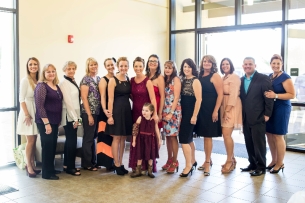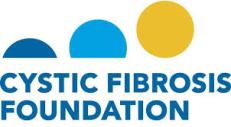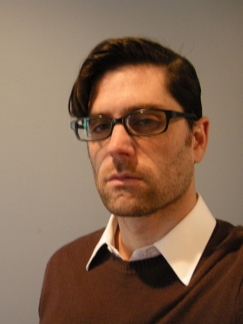You are currently browsing the monthly archive for January 2015.
Guest Blogger Beth Jones, whose daughter Jocelyn has Rett Syndrome, urges more families to take action
Yesterday, we sat in 5 hours of traffic taking Jocelyn to Los Angeles for her orthopedic appointment. Her scoliosis is turning her into a question mark, her back brace is so uncomfortably tight it disturbs her g-tube and makes feedings difficult. We strive to do the best for our daughter but we are constantly juggling details like this. After the long day, the-oh-too-familiar feelings of “defeat” and “alone” swarmed over me. A feeling I am certain every Rett Syndrome parent feels from time to time.
But today is a new day. Today I am preparing for our first committee meeting of the year for Jocelyn’s Journey. Today, I get to fight back and drink up the hope that once Jocelyn is cured, days like yesterday will be a memory, instead of my day to day reality.
This is our 5th year hosting Jocelyn’s Journey and we’ve proudly supported the Rett Syndrome Research Trust with 100% of the revenue from each event. As I reflect on our first year hosting, I was a mess, honestly. It was hard for me to admit that I needed help. I was so afraid no one would buy tickets to come to our event. I was worried what people would think of me, asking for money. I was worried my friends and family would be too busy with their own lives to join forces with me and make a committee. I have learned, in the past five years, that I couldn’t have been more wrong.
The outpouring of people who support us each year has humbled us. I’ve learned that people want to help us, they just don’t know how. Having an annual event that supports the research that will one day CURE Jocelyn inspires and thrills everyone to help. Our committee has grown from 5 people to 20 in just a few short years! We sell out of tickets each and every year for the event, donations roll in and we are becoming well known around our community. RSRT is very helpful each and every year and has guided us on what to do, as I had NEVER done anything like this before. Year one, left me hooked—I figured out how to get over the sadness, defeat, feeling alone and helpless: I fight back! Jocelyn’s Journey’s moto: “No donation is too small or too large” and we stand on that! We are grateful for every dollar and I know RSRT is too!
A few months ago, I was speaking to Tim Freeman, Program Director at RSRT, and he expressed to me “if just 10 more families would do what you are doing with fundraising, it would change the research”. I was sad that money was standing in the way of Jocelyn and all Rett girls getting treatment. But then I was excited—this was in our control! We, all Rett families, can fix this problem and expedite treatment!
The Jocelyn’s Journey committee and I have set a goal this year to be one of those 10 families by doubling our average fundraising earnings. So that leaves 9 families! There has to be someone out there who has thought of hosting an event but has been worried about how to get started. I relate to the hesitation, but be assured, you will have more support and guidance than you would expect. Call Monica or Tim, please! An event is absolutely worth it and brings in the most funding. An event can be anything you want it to be—a barbecue, a poker party, a pancake breakfast, a 5K walk or run. And there are other things you can do too. I did an “informational” booth at church to talk about Jocelyn and without asking, people handed over donations! Be creative, be fun! If all 15,000 Rett families hosted something small that raised just a few hundred to a thousand dollars, the impact would be huge. No event is too large, or too small! Please learn from my fear in the beginning: your friends and family want to help you—they just need you to give them the opportunity to help.
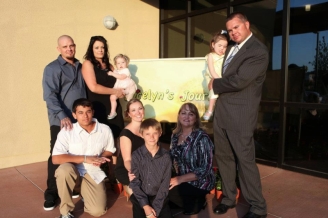 As Rett parents we know, the first step is the hardest one. Some of us, like myself, are still waiting to see their girl take her first step. The same holds true for fundraising—getting started is the first step and the hardest part. Once you get going though, you don’t want to stop. I won’t stop, I will not give up. I don’t expect Jocelyn to give up and I owe her the same strength in return.
As Rett parents we know, the first step is the hardest one. Some of us, like myself, are still waiting to see their girl take her first step. The same holds true for fundraising—getting started is the first step and the hardest part. Once you get going though, you don’t want to stop. I won’t stop, I will not give up. I don’t expect Jocelyn to give up and I owe her the same strength in return.
by Monica Coenraads
As always at RSRT, our funded projects are aimed at developing effective treatments and a cure for Rett Syndrome. But one of the key roadblocks to achieving this has been a lack of knowledge about the MeCP2 protein and how it functions. In 2011 RSRT decided to conduct an experiment of our own. Take three world-class laboratories and give them the necessary financial resources ($5.5 million awarded to date) and infrastructure to tackle a question that no one yet has been able to answer: what does the MeCP2 protein do?
Almost four years later the labs of Gail Mandel (Oregon Health and Science University), Michael Greenberg (Harvard University), and Adrian Bird (University of Edinburgh) are getting closer to that answer and have made the following discoveries along the way— discoveries that could prove to be invaluable to how we will ultimately change the lives of girls and women afflicted with Rett:
- It was known that MeCP2 binds to DNA in brain cells, but the Consortium showed that MeCP2 has a binding partner, called NCOR, that is known to silence genes. Importantly, the Consortium showed that mutations that disrupt the ability of MeCP2 to bind to NCOR are associated with Rett in people, thus lending support for the essential nature of this interaction.
- MeCP2 is modulated by phosphorylation for normal nervous system function.
- The Consortium has shown that gene therapy can reverse symptoms in symptomatic female Rett mice. This work is being actively followed up by a dedicated “Gene Therapy Consortium” also funded by RSRT.
- As yet unpublished work is shedding light on the crucial question of which genes in the brain are controlled by MeCP2. It may be possible to target these genes via specific drugs.

The MECP2 Consortium meets in Boston twice a year and holds conference calls in between the meetings. The meetings at first included only Professors Mandel, Bird and Greenberg but have grown over time to include many of the lab members. The middle and right pictures are from the last meeting in October 2014.
Recently I posed a few questions to the three investigators about the important work they are tackling.
 Despite much effort, there is little consensus among scientists regarding what MeCP2 actually does in the brain. Needless to say it helps greatly when fixing something to know exactly what has gone wrong, so this is an issue that badly needs addressing. Fortunately the research tools for getting at the problem have gotten much better over the past few years and we are now in a good position to nail this problem down.
Despite much effort, there is little consensus among scientists regarding what MeCP2 actually does in the brain. Needless to say it helps greatly when fixing something to know exactly what has gone wrong, so this is an issue that badly needs addressing. Fortunately the research tools for getting at the problem have gotten much better over the past few years and we are now in a good position to nail this problem down.
 It’s important to know why the loss of MeCP2 gives rise to Rett as well as helping to determine a minimally active form that might be better suited to gene replacement approaches.
It’s important to know why the loss of MeCP2 gives rise to Rett as well as helping to determine a minimally active form that might be better suited to gene replacement approaches.
 It is hard for me to imagine a treatment for Rett that isn’t based on an understanding of MeCP2 function. Based on what we already know about MeCP2 it is clear that it’s function in neurons is quite complex and difficult to understand. That together with the complexity of the brain makes me think it is unlikely that a therapy that isn’t based on a deep understanding of MeCP2 function is likely to work. Nevertheless, I wouldn’t rule it out.
It is hard for me to imagine a treatment for Rett that isn’t based on an understanding of MeCP2 function. Based on what we already know about MeCP2 it is clear that it’s function in neurons is quite complex and difficult to understand. That together with the complexity of the brain makes me think it is unlikely that a therapy that isn’t based on a deep understanding of MeCP2 function is likely to work. Nevertheless, I wouldn’t rule it out.
 If we could correct the genetic changes that cause MeCP2 to dysfunction in Rett so that the defective gene is replaced by a healthy one, then we would not need to know how MeCP2 works. This ideal scenario is becoming less of a fantasy, but is still some ways from being a reality. Knowing precisely what pathways MeCP2 regulates offers the prospect of treating downstream effects of the mutation as an alternative to correcting the gene. It is too early to say at the moment which approach is more likely to bear fruit so it is important to try both.
If we could correct the genetic changes that cause MeCP2 to dysfunction in Rett so that the defective gene is replaced by a healthy one, then we would not need to know how MeCP2 works. This ideal scenario is becoming less of a fantasy, but is still some ways from being a reality. Knowing precisely what pathways MeCP2 regulates offers the prospect of treating downstream effects of the mutation as an alternative to correcting the gene. It is too early to say at the moment which approach is more likely to bear fruit so it is important to try both.
 I think investigators in other disciplines would love to have what we have built together. The Consortium is a wonderful stimulus for new ways of thinking critically about how to study and/or cure Rett. Two heads, or in this case three heads, are always better than one, particularly because we have different expertise and backgrounds. And we can build on each other’s discoveries much more quickly.
I think investigators in other disciplines would love to have what we have built together. The Consortium is a wonderful stimulus for new ways of thinking critically about how to study and/or cure Rett. Two heads, or in this case three heads, are always better than one, particularly because we have different expertise and backgrounds. And we can build on each other’s discoveries much more quickly.
 The Consortium is a new way of working that has benefited our lab’s work greatly. Being able to thrash out ideas and explore different ways of looking at Rett with top class scientists from different backgrounds has sharpened up everybody’s research. All the partners have fully committed to the Consortium idea and as a result no one feels inhibited about robustly questioning the others. This kind of free and frank exchange keeps us on our toes and always makes research better. As well as ideas and data, we share materials and equipment, which speeds up our work and reduces costs.
The Consortium is a new way of working that has benefited our lab’s work greatly. Being able to thrash out ideas and explore different ways of looking at Rett with top class scientists from different backgrounds has sharpened up everybody’s research. All the partners have fully committed to the Consortium idea and as a result no one feels inhibited about robustly questioning the others. This kind of free and frank exchange keeps us on our toes and always makes research better. As well as ideas and data, we share materials and equipment, which speeds up our work and reduces costs.
 Science is usually built on a competitive model where PIs compete for funding and try to make and publish discoveries ahead of their peers. Sharing data and plans for experiments with people who were once competitors is a different way of working – but one that is also liberating. It requires trust and a recognition by everyone that a higher goal is at stake. This Consortium really works. Hopefully we are poised to advance our knowledge of MeCP2 in ways that will make a difference therapeutically.
Science is usually built on a competitive model where PIs compete for funding and try to make and publish discoveries ahead of their peers. Sharing data and plans for experiments with people who were once competitors is a different way of working – but one that is also liberating. It requires trust and a recognition by everyone that a higher goal is at stake. This Consortium really works. Hopefully we are poised to advance our knowledge of MeCP2 in ways that will make a difference therapeutically.
 It has been very rewarding. Nothing really has surprised me because I knew Adrian Bird and Mike Greenberg pretty well beforehand and I had ultimate confidence in the high quality of their science and their collegiality.
It has been very rewarding. Nothing really has surprised me because I knew Adrian Bird and Mike Greenberg pretty well beforehand and I had ultimate confidence in the high quality of their science and their collegiality.
Participating in the Consortium and working collaboratively with the Mand el and Bird labs has been a wonderful experience. The rigor and pace of scientific progress is much greater with the three labs working together than would be possible if each lab were working alone. Monica has been essential to keeping the Consortium on target and helping make sure the scientists in the Consortium continue to work together effectively over time.
el and Bird labs has been a wonderful experience. The rigor and pace of scientific progress is much greater with the three labs working together than would be possible if each lab were working alone. Monica has been essential to keeping the Consortium on target and helping make sure the scientists in the Consortium continue to work together effectively over time.
The lab members from the three labs have thoughts of their own about the MECP2 Consortium.
| Consortium Research Projects | Reflections on Meeting | |
| Harrison Gabel (Greenberg lab) 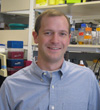 |
Benyam Kinde, Caitlin Gilbert, William Renthal and myself have been studying how MECP2 functions when it is bound to DNA in neurons and how it might control the levels of many proteins important for the function of neurons in the brain. This exciting work may provide an answer to the long-standing question of exactly what goes wrong in individual neurons in the Rett Syndrome brain when MeCP2 is lost. I described recent results from experiments using cultured mouse neurons that lack MeCP2 to test whether drugs can correct the defects in these neurons. Promising results from these experiments suggest that a drug can at least partially correct these defects. We are now beginning to explore if this drug can improve symptoms in mice with Rett Syndrome by delivering the drug to the brain of these mice. | In general it is truly unprecedented to have three powerhouse labs that work on the mechanism of MeCP2 get together for a meeting and share their most recent data. The reality is that under any other circumstances we would be competing (hopefully in a congenial way!) and largely keeping secrets from one another until the data were published. This Consortium breaks down these walls and as a result the science moves much faster. I commend Adrian, Gail, and Mike for being willing to share so much, all of the lab members for trusting in the other Consortium members to treat them fairly, and most of all RSRT for creating such a unique and effective Consortium. Thanks! |
| Benyam Kinde (Greenberg lab)  |
At the meeting I spoke about experiments that provide insight into the mechanism of MeCP2-mediated gene regulation. Through a series of biochemical, genetic and genomic experiments, I described how DNA methylation, specifically occurring in the CA dinucleotide sequence context in neurons, serves as a critical site for MeCP2 binding and regulation of gene expression in the developing brain. | The Consortium has provided a unique opportunity to share novel findings, which ultimately has led to invaluable discussions that provide critical insight into the design and interpretation of experiments. In this way, the Consortium has allowed all three laboratories to develop projects at an exceedingly rapid pace. |
| Matt Lyst (Greenberg lab)  |
Last year we published evidence for a model where the primary function of MeCP2 is to recruit the NCoR/SMRT co-repressor complex to chromatin. At the last Consortium meeting I presented work aimed at further testing this hypothesis, and also investigating which components of this complex are most relevant to Rett Syndrome. |
Sharing current data between labs means we all receive input from people in the field but outside of our own labs at a much earlier stage than would normally happen. |
| Sabine Lagger (Bird lab)  |
MeCP2 is classically described as a methyl DNA binding protein exerting its function by exclusively binding to methylated CpG dinucleotides. It became obvious in recent years that MeCP2 can not only bind to methyl CpG dinucleotides but has been suggested to bind to other forms of modified DNA in in vitro experiments broadening its DNA binding sites. My work aims at establishing in vivo models to analyze MeCP2 binding patterns in brain cells. I therefore sort neuronal and glial cells from mouse brain and subject them to DNA methylation analysis to the single base pair resolution level. I can then overlay these maps with MECP2 binding profiles and identify the true in vivo MeCP2 targets. This analysis will help us to understand how MeCP2 is acting on chromatin and what the necessary signal for its binding are. | I was invited to the RSRT Consortium meetings in Boston twice and both times I could not wait to get back to the lab and start working again. The possibility to present and discuss my work with like- minded and enthusiastic experts on MeCP2 is extremely beneficial and made me look at scientific problems from different angles. Meeting Rett Syndrome patients’ parents was very interesting for me and made me realize even more how important it is to keep working on understanding this devastating disease and to ultimately find a cure. |
| John Connelly (Bird lab)  |
The MeCP2 protein acts by interacting with DNA at many locations inside cells. It is not clear however exactly what DNA sequences MeCP2 binds to on chromosomes. My work aims to identify what these sequences are. My hope is that understanding how the protein works in greater detail will aid the design of an effective therapeutic strategy. |
I was really pleased to be able to attend the recent MeCP2 Consortium meeting in Boston as it was really nice to meet and talk to the parents of children with Rett syndrome and discuss my work with them and the other scientists present. When in Boston I found that other members of the Consortium had, reassuringly, reached similar conclusions and this gave me the impetus to continue my particular avenue of investigation. |
| Hume Akahori-Stroud (Greenberg lab)  |
I talked about a series of experiments on understanding the role of DNA methylation patterning in the brain. DNA methylation is a chemical modification of DNA that is abundant in neurons, and regulates MeCP2 function. Understanding the molecular mechanisms of DNA methylation in regulating MeCP2 is important to understand how MeCP2 works. | It was great getting to know what other laboratories were up to, and I think the meeting has increased my understanding on MeCP2 a step further. |
| John Sinnamon (Mandel lab)  |
Many of the mutations in MeCP2, which cause Rett Syndrome are single nucleotide changes known as point mutations. Our goal is to harness the catalytic activity of an enzyme already found in cells to target and correct these mutations in MeCP2 RNA. We have been able to edit MeCP2 RNA in vitro and are working towards testing our strategy in a mouse containing a point mutation, which has been identified in several Rett patients. | Attending the RSRT Consortium meetings is a wonderful experience. There is a collaborative atmosphere you do not see at large scientific meetings and everyone is focused on understanding the biology of MeCP2 so that we can understand Rett Syndrome. For me personally, it is very powerful to meet parents of girls with Rett and to talk to them about my research. It provides a reminder of what I am working towards and I think gives the families an opportunity to talk one on one with the scientists they support. |
| Ruth Shah (Bird lab)  |
My project involves modeling Rett – causing mutations in human neurons. Model systems are a great way to elucidate the molecular mechanisms behind diseases and to understand how a protein works in a cellular context. I really hope these human neurons will help us to understand the details involved in Rett, they may even provide a useful tool for testing gene therapy ideas in! | Being part of the Consortium meeting gave me the opportunity to meet neuroscientists and gain advice and ideas from them on how to improve my project and my research. The flexibility to present my project in detail to an experienced audience without fear of my project being torn apart is a great thing. It provides the freedom for open chat and encouragement and an exchange of thoughts and ideas in a positive manner, rather than having a competitive undertone to the day. This is the environment that is needed in scientific research to encourage advances in knowledge. It allows for collaboration in a productive manner, for example as a result of the Consortium, I now have a list of genes whose expression I should look into from one of the other attending labs. If it weren’t for the Consortium I doubt information like this would be shared among labs in such an open manner. |
| Jackie Guy (Bird lab)  |
Using information we have about the MECP2 mutations found in girls with Rett we have been able to identify two important regions of the protein: the region that binds to methylated DNA (MBD) and a small region which binds to a repressor complex, NCoR/SMRT. I am producing a number of different mutations in mouse embryonic stem cells in order to investigate why they cause Rett Syndrome. This may lead to a better understanding of the function and/or structure of MeCP2. | I enjoyed hearing about the work of the other two groups in the Consortium. Each group has its own particular view of what MeCP2 is doing and I found it refreshing to think about things from a slightly different angle. |
| Rebekah Tillotson (Bird lab)  |
Missense mutations that cause Rett are almost all located in either the region of MeCP2 protein that binds to methylated DNA or the region that interacts with the NCoR/SMRT repressor complex. This suggests that the function of MeCP2 is to form a ‘bridge’ between chromatin and the repressor proteins, and loss of this bridge results in brain dysfunction in Rett. I am testing this hypothesis by manipulating the MeCP2 gene in mice, and then carrying out behavioral tests to determine whether they exhibit the symptoms observed in the mouse models of Rett. | The RSRT Consortium was a great opportunity for me to meet other scientists in the field, to learn about and discuss their work, and to get valuable input on my own project. The informality and openness of the discussion made it a thoroughly rewarding and stimulating experience. |
| Kyla Brown (Bird lab) 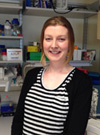 |
Rett Syndrome severity varies partly because of the nature of the MECP2 mutation. My project focuses on making animal models of “milder” mutations to see if there are specific functions of MeCP2 that these mutations affect. | The Consortium provides a unique opportunity to communicate findings within a group of expert researchers as well as to forge collaborations. I enjoyed being able to appreciate others’ perspectives on the same clinical and biological problem and seeing how this can result in advances in the MeCP2 field. |
| Martha Koerner (Bird lab)  |
I am working on MeCP2 duplication syndrome. I am trying to understand what happens if you do have too much MeCP2 and what we can do to counteract the symptoms caused by excess MeCP2. | The Consortium meeting in October was the first one I’ve attended. I’ve found it incredibly helpful to be able to talk to other scientists who work on the same gene, to learn about novel findings of others that will impact my research and also to get input from experts into the work I’m doing. |
| Susan Su (Greenberg lab)  |
I am interested in examining the ultrastructural changes underlying the altered cellular morphology and synaptic connections of a mouse model of Rett Syndrome. | I enjoy our lively, intellectual discussions at the Consortium meetings where we all share a common goal of gaining a deeper understanding of MeCP2. The Consortium meetings are wonderful opportunities to reflect on preliminary data and to share helpful reagents and insights for our experiments. |
| Jim Selfridge (Bird lab)  |
My work in the Bird Lab focuses on the production and analyses of genetically modified animal models of Rett. These models have proved invaluable to Rett research over the years and the novel models continue to increase our understanding of MeCP2 function and the underlying molecular basis of Rett. I am also committed to using these Rett models to investigate potential therapeutic strategies. | Although I never actually presented any of my research in person at the last meeting I was still able to benefit hugely by attending. The Consortium meetings and in particular the relaxed, open and friendly format provide a great focus for Rett researchers. It gives us a perfect opportunity to have our work critically assessed by experts in the field, even in the early stages of a project. This often affords us extra insight that we might not get from the sometimes insular environment of our own individual groups. I look forward to being part of many more meetings! |
| Will Renthal (Greenberg lab)  |
Rett is characterized by profound synaptic dysfunction. I am studying the role MeCP2 plays in coordinating the gene programs responsible for normal synaptic responses to neuronal activity. Specifically, our laboratory has found that neuronal activity drives the rapid phosphorylation of MeCP2 at serine 86, so my current efforts are aimed at identifying the functional significance of this event. | I think the Consortium was a fantastic opportunity to share ideas with people from a variety of backgrounds to accelerate Rett research. We were having technical difficulties with some of our experiments and the collective wisdom of the Consortium has been crucial for overcoming them. |
| Justyna Cholewa-Waclaw (Bird lab)  |
The aim of my project is to define primary transcriptional consequences of MeCP2 depletion. In order to do that I use an in vitro system based on immortalized human neural precursors which can be differentiated into dopaminergic neurons. I generated cells with reduced amount of MeCP2, entirely depleted MeCP2 and increased levels of MeCP2. Gene expression changes in these cells with different levels of MeCP2 will be studied additionally in the context of gene body methylation and hydroxymethylation to provide the molecular basis of MeCP2 function. | I think the Consortium meetings are great. The informal nature is very beneficial. I had brilliant opportunity to discuss my work with people working on the same problem. I could also ask questions more openly and know what other people are doing. |
by Monica Coenraads
This past November the Cystic Fibrosis Foundation (CFF) announced an unprecedented windfall: $3.3 billion from selling royalty rights to drugs that it helped develop to treat Cystic Fibrosis. The payout is the largest financial return ever secured by a disease non profit. The CFF is the gold standard for anyone working in the disease non profit world.
Years ago I had the good fortune to meet the founder of CFF, Doris Tulcin. She now serves on our Professional Advisory Council. I consider myself lucky to count Doris as well as the CFF CEO, Bob Beall, among my mentors. Their $150 million investment for this particular drug has paid off handsomely and I couldn’t be happier for them and for the entire CF community. It’s been interesting however to see the spectrum of opinions regarding this windfall. Below are two polar opposite commentaries on the subject. I encourage you to read them both.
In case you are wondering whose view I agree with…it’s Peter Kolchinsky!
Rethinking Venture Philanthropy After the Kalydeco Windfall
by Peter Kolchinsky
 The Cystic Fibrosis (CF) Foundation’s big win in venture philanthropy can fuel constructive competition among companies developing innovative CF drugs, benefiting both patients and the healthcare system by increasing future treatment options and reducing their cost.
The Cystic Fibrosis (CF) Foundation’s big win in venture philanthropy can fuel constructive competition among companies developing innovative CF drugs, benefiting both patients and the healthcare system by increasing future treatment options and reducing their cost.
CF is a fatal genetic disease affecting around 30,000 people in the U.S. that is caused by mutations in the cystic fibrosis transmembrane receptor (CFTR) gene. These mutations disrupt either the expression or function of the CFTR protein, causing mucus buildup in the lungs that can impair breathing and lead to infection. Although the most severe symptoms of CF impact the lungs, the disease also leads to a shortage of the pancreatic enzymes needed for digestion.
The vast majority of drugs marketed to treat CF address the symptoms, and not the cause of the disease. Ivacaftor (Kalydeco), a drug from Vertex Pharmaceuticals (NASDAQ: VRTX) that was developed with an investment from the CF Foundation, is the only therapy available that addresses the underlying cause of CF, though currently only for a small fraction of patients with particular mutations. Vertex is developing other drugs, so-called CFTR correctors, that can be combined with ivacaftor to address more CF patients.
Royalty Pharma’s $3.3 billion purchase of the CF Foundation’s roughly 10 percent royalty on Vertex’s CF drugs last month sparked some controversy. Articles in the New York Times and Xconomy suggested that the foundation had somehow failed patients by allowing Vertex to price its drugs so high that a 10 percent royalty could be worth so much. These criticisms echo those directed at the foundation when ivacaftor hit the market in 2012.
Ivacaftor’s price tag, about $300,000 per year, per patient, shocked the market. Critics declared that the CF Foundation should have done more to ensure an affordable price for patients. They further insinuated that the drug’s price was evidence that the foundation had a conflict of interest; it could not simultaneously serve patients and fund biotech companies. In the wake of the multibillion-dollar royalty sale, critics are now repeating these same accusations.
These critics are missing an important part of the CF Foundation’s strategy. While the foundation could not possibly have any leverage over how Vertex priced its drug, by harvesting $3.3 billion now, it will be able to speed the development of over a dozen early competitors. This will usher in an era of competition that will help make the CF therapies of the near future not only better, but also less expensive—long before Vertex’s drugs go generic.
Stop Subsidizing Big Pharma
by Llewellyn Hinkes-Jones
Robert J. Beall, the president and chief executive of the Cystic Fibrosis Foundation, called his recent decision to sell the royalty rights to his organization’s research a “game changer.” Indeed: Deals like this, in which an investment company paid the foundation $3.3 billion for its future royalties from several cystic fibrosis drugs it helped finance, could revolutionize the way medical research is funded. Rather than the staid model of government-funded institutions handing out grants to academic research facilities, a new breed of “venture philanthropies” like the Cystic Fibrosis Foundation could corral private investment into developing lifesaving drugs quickly and cheaply.
The problem is that venture philanthropy is, essentially, another term for privatizing scientific research. Instead of decisions about the fate of scientific funding being made by publicly oriented institutions, those decisions are being put in the hands of anonymous philanthropists and ostensibly benevolent nonprofits.
At the risk of oversimplification, biomedical research divides into two categories: private and public. The former is the constellation of big pharmaceutical companies and start-up labs. The latter comprises government agencies and the universities and philanthropies that rely on government support — directly, through grants, or indirectly, through tax policy. The former can charge whatever it wants for its products; the latter is limited by government rules and price controls.
Venture philanthropy complicates this picture by introducing a tax-exempt loophole. An organization like the Cystic Fibrosis Foundation will take in tax-exempt donations to invest in a pharmaceutical company — in this case, Vertex Pharmaceuticals — to develop drugs based on publicly funded research. Venture philanthropies can then sell the results of that research to private industry to deliver drugs to the market.


